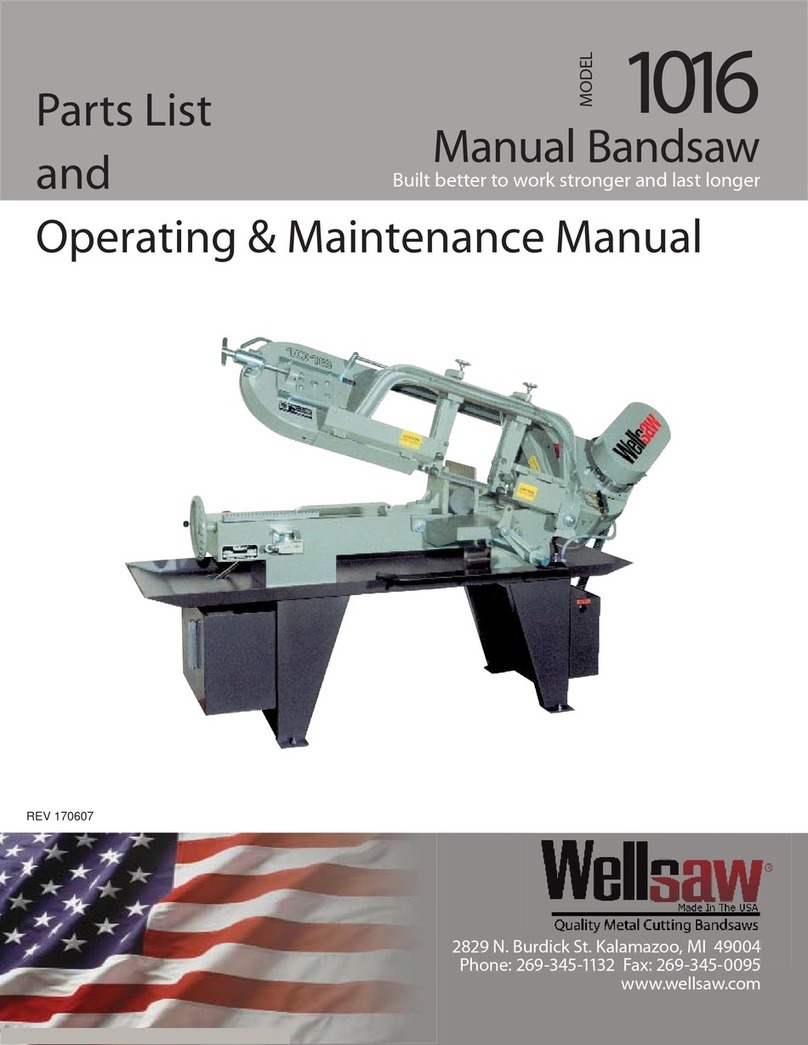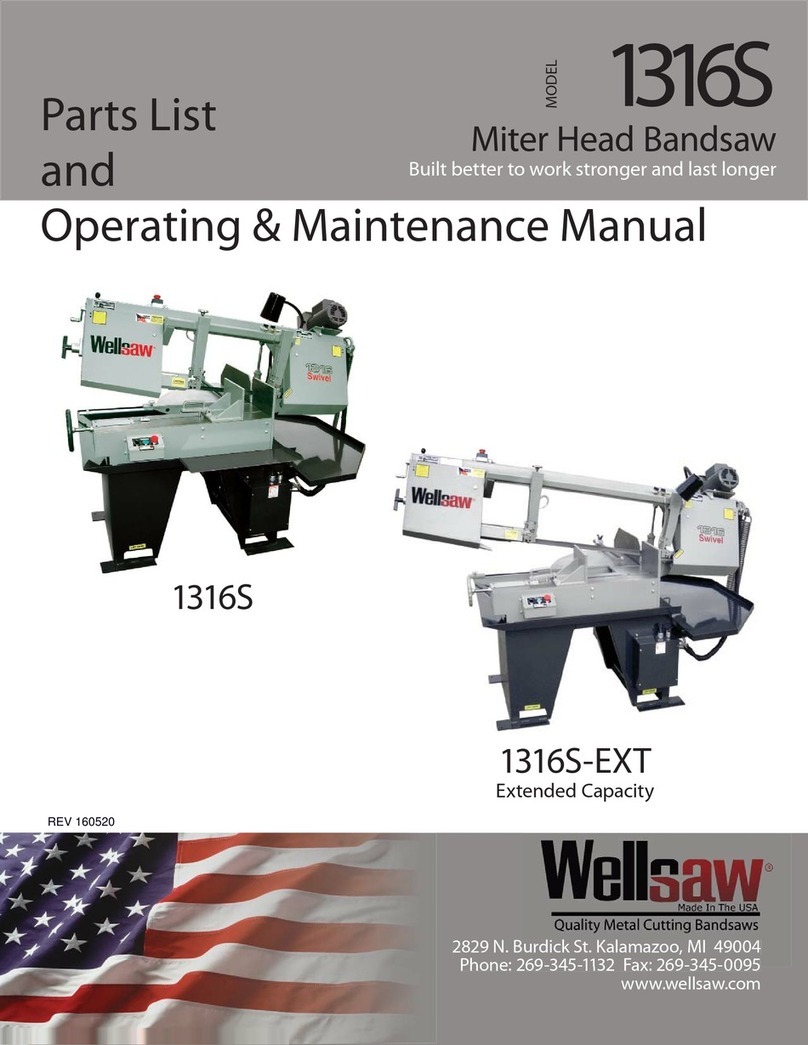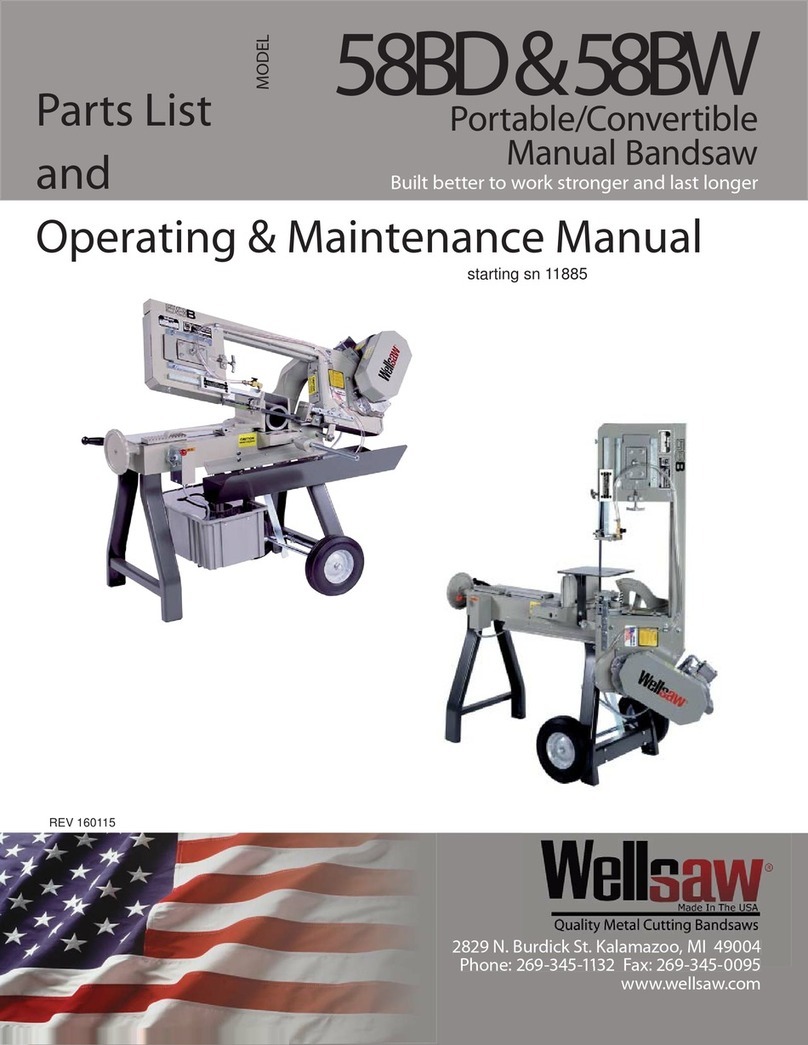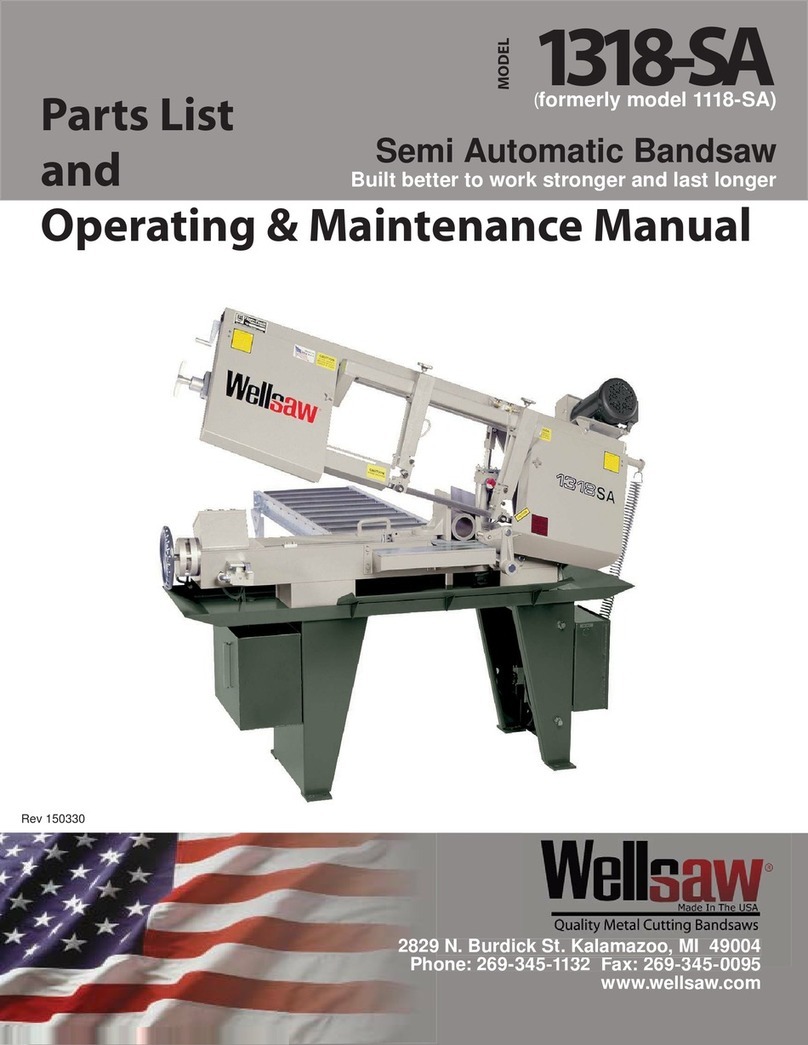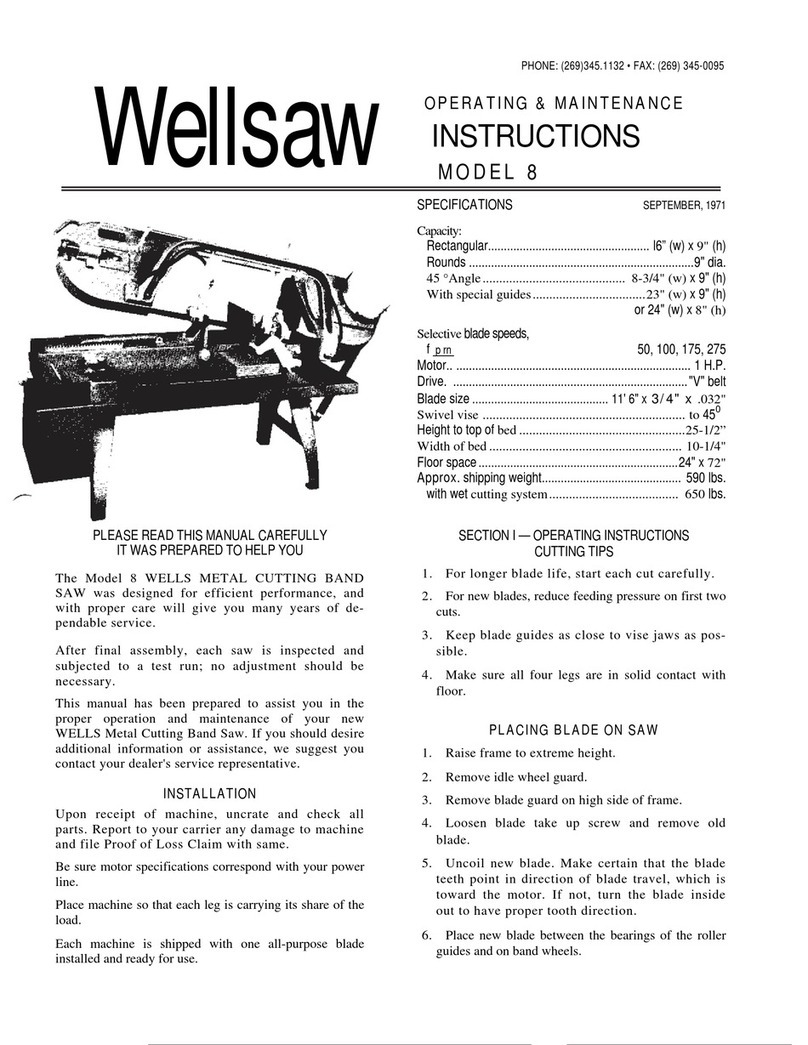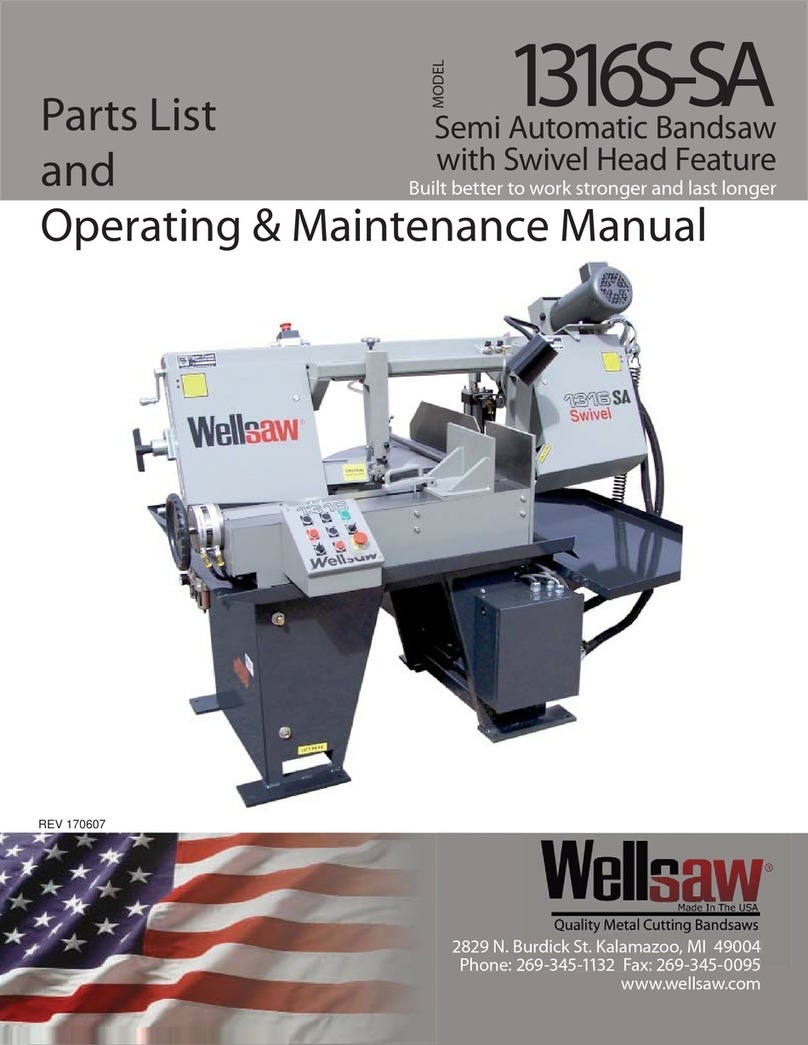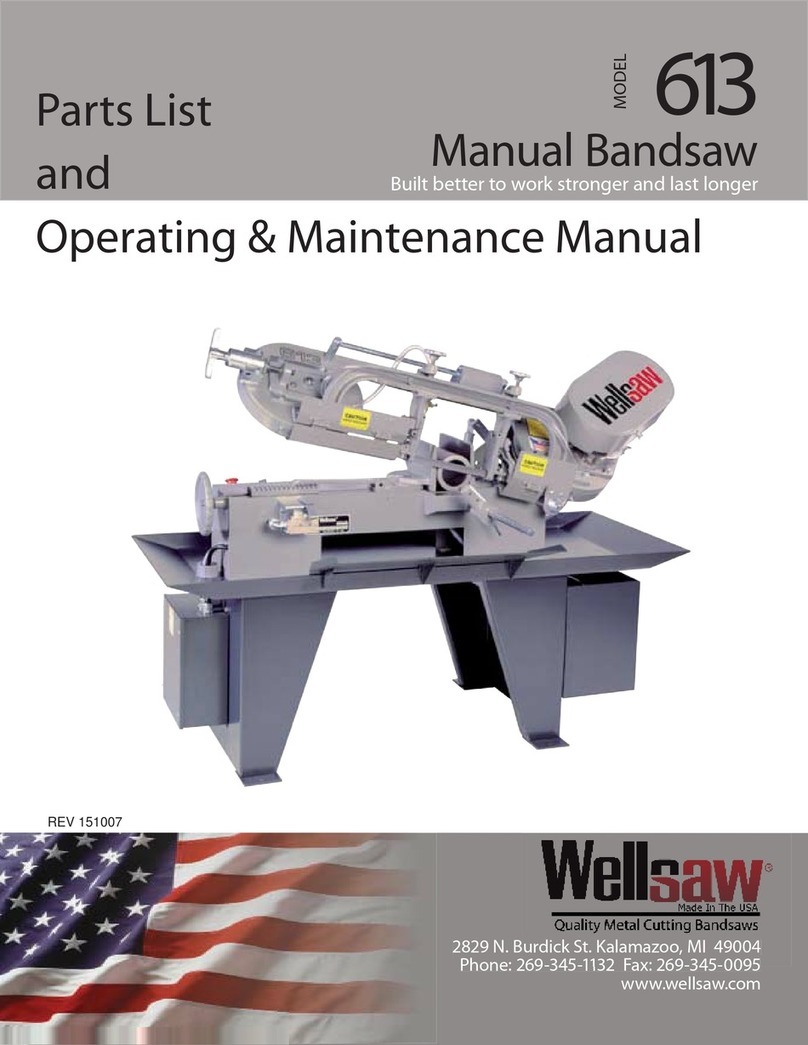
3
- Misuse of this machine can cause serious injury.
- For safety, machine must be set up, used and serviced
properly.
- Read, understand and follow instructions in the
operator’s and parts manual.
When setting up machine:
- Always avoid using machine in damp or poorly lighted
work areas.
- Always be sure machine is securely anchored to the
floor.
- Always keep machine guards in place.
- Always put start switch in “OFF” position before
plugging in machine.
When using machine:
- Never operate with machine guards missing.
- Always wear safety glasses with side shields (See
ANSI Z87.1)
- Never wear loose clothing or jewelry.
- Never overreach - you may slip and fall into the
machine.
- Never leave machine running while away from it.
1. Always wear protective eye wear when operating
machinery. Eye wear shall be impact resistant, protective
safety glasses with side shields which comply with ANSI
Z87.1 specifications. Use of eye wear which does not comply
with ANSI Z87.1 specifications could result in severe injury
from breakage of eye protection.
2. Wear proper apparel. No loose clothing or jewelry which
can get caught in moving parts. Rubber soled footwear is
recommended for best footing.
3. Do not overreach. Failure to maintain proper working
position can cause you to fall into the machine or cause your
clothing to get caught - pulling you into the machine.
4. Keep guards in place and in proper working order. Do not
operate the machine with guards removed.
5. Avoid dangerous working environments. Do not use
stationary machine tools in wet or damp locations. Keep work
areas clean and well lit. Special electrics should be used when
working on flammable materials.
6. Avoid accidental starts by being sure the start switch is
“OFF” before plugging in the machine.
7. Never leave the machine running while unattended.
Machine shall be shut off whenever it is not in operation.
8. Disconnect electrical power before servicing. Whenever
changing accessories or general maintenance is done on
the machine, electrical power to the machine must be
disconnected before work is done.
- Always shut off the machine when not in use.
When servicing the machine:
- Always unplug machine from electrical power while
servicing.
- Always follow instructions in operators and parts
manual when changing accessory tools or parts.
- Never modify the machine.
Read and follow these simple rules for best results and
full benefits from your machine. Used properly,
Wellsaw’s machinery is among the best in design and
safety. However, any machine used improperly can be
rendered inefficient and unsafe. It is absolutely
mandatory that those who use our products be properly
trained in how to use them correctly. They should read
and understand the Operators and Parts manual as well
as all labels affixed to the machine. Failure in
following all of these warnings can cause serious
injuries.
9. Maintain all machine tools with care. Follow all
maintenance instructions for lubricating and the changing of
accessories. No attempt shall be made to modify or have
makeshift repairs done to the machine. This not only voids
the warranty but also renders the machine unsafe.
10. Secure work. Use clamps or a vise to hold work when
practical. It is safer than using your hands and it frees both
hands to operate the machine.
11. Never brush away chips while the machine is in
operation.
12. Keep work area clean. Cluttered areas invite accidents.
13. Remove adjusting keys and wrenches before turning the
machine back on.
14. Use the right tool. Don’t force a tool or attachment to do
a job it was not designed for.
15. Use only recommended accessories and follow
manufacturers instructions pertaining to them.
16. Keep hands in sight and clear of all moving parts and
cutting surfaces.
17. All visitors should be kept at a safe distance from the
work area. Make workshop completely safe by using
padlocks, master switches, or by removing starter keys.
18. Know the tool you are using - its application, limitations,
and potential hazards.
WARNING
Machinery general safety warnings
